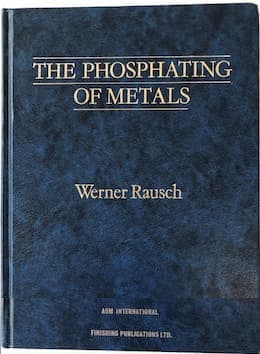
Curated with aloha by
Ted Mooney, P.E. RET

The authoritative public forum
for Metal Finishing 1989-2025

-----
Cleaning procedure for a phosphatizing line
We have a five stage washer and are looking for a chemical (or chemicals) that we could use to clean our phosphate stage to dissolve the buildup from use, especially the nozzles, and would like to find out what is available and what would be involved as far as use and disposal are concerned.
We also would like to know if a chemical is available to dissolve the buildup in our Stage One alkaline cleaner.
Thanks
- Racine, Wisconsin
1996
The spray nozzles in our cleaner for a coil-coating line always used to clog up. I believe that it was mostly hard water deposits. But we had an old- fashioned system without filtration. Perhaps the best way to clean the nozzles is to find and eliminate what is precipitating, if possible.
I know that the downtime for cleaning nozzles was desperately expensive, and would probably have paid for filtration equipment, water softeners, and the research needed to find the answer. To do it over again, I would get my vendors to help me study the problem. They have laboratory facilities where the research could be done. Then, do a cost analysis of what it would take to stop or reduce the clogging and take it up with management.
I was in charge of safety at this coil coating plant, and climbing in and out of slippery, greasy, cleaner tanks with everything you need to remove and clean the headers and nozzles was one of the most dangerous jobs in the plant. At the least, have a good plan for the cleaning job, which is always done in haste.

Tom Pullizzi
Falls Township, Pennsylvania
1996
1996
Some amount of sludge is a byproduct of the phosphating process whether it be a iron phosphate or zinc phosphate. Typically the zinc phosphate generates a much higher degree of sludge. The sludge that clogs nozzles and risers are inorganic in nature. It is usually a combination of the phosphate sludge above as well hard water salts (unless the water has been pretreated.)
I prefer the use of a phosphoric acid such as Oakite 31 [from Chemetall] because it is compatible with the acid used in a phosphate. It is also less aggressive.
From a waste treatment standpoint it needs to be neutralized with an alkaline neutralizer. Before discharging you would need to determine what your discharge limitations are, and have the solution analyzed to determine metal, oils, etc. to see if it is in discharge limitations.
Usually the build up in the 1st stage is primarily organics, from the soils that have been removed. There could also be a build up of hard water salts. There are two approaches to cleaning.
1)The use of a highly alkaline chelated material such as Oakite Rustripper M. It needs to be heated 160 but will remove organics and inorganics. Chelates will tie up metals and are difficult to waste treat.
2) Start with a highly alkaline cleaner that is not chelated. The inorganics if light enough and incorporated into the organics could come off with the organics. Neutralize with an acidic neutralizer and check as above.
These are just some general guidelines. Cleaning and descaling washers are very common. I wish more companies included it as part of a regular P.M. program. It would enhance the pretreatment process and improve thermal efficiency
Q, A, or Comment on THIS thread -or- Start a NEW Thread
